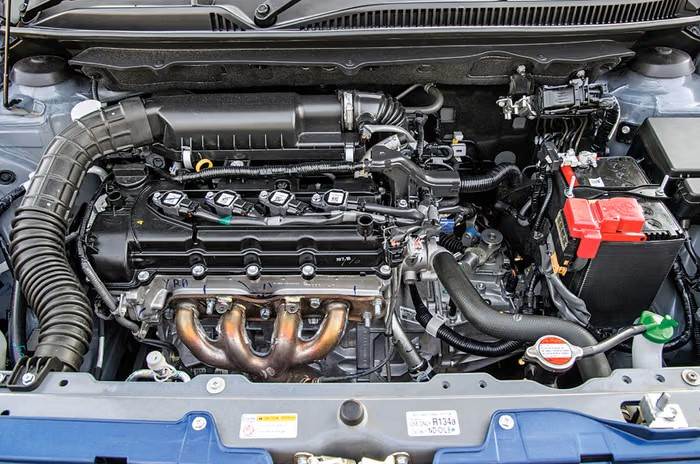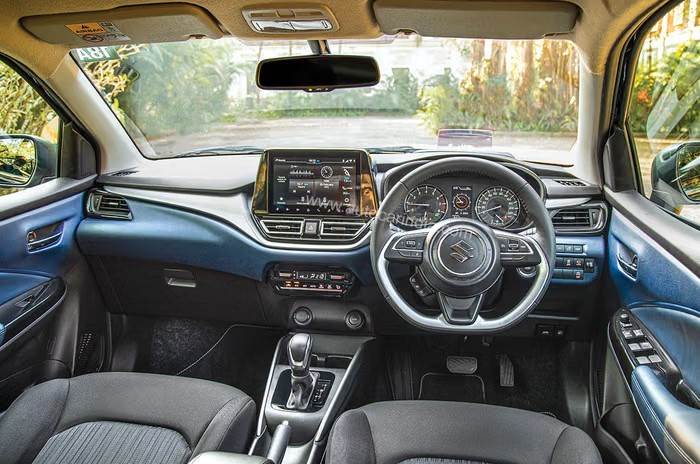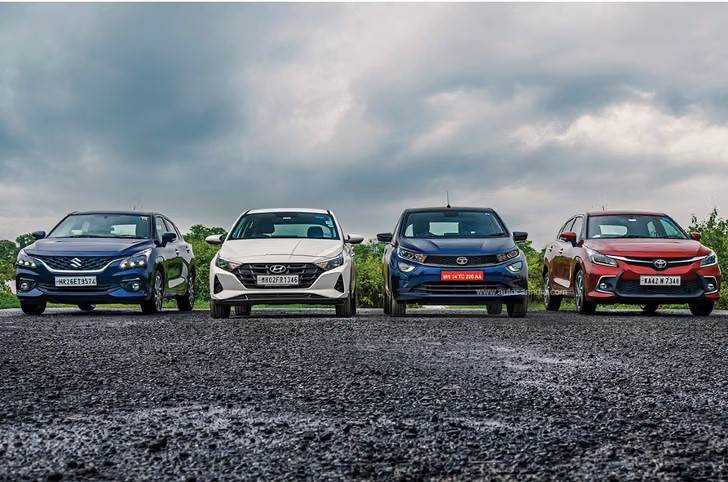
Ten years since launch, the Maruti Suzuki Baleno remains one of India’s best-selling premium hatchbacks. It has crossed two million sales globally and continues to be a preferred choice for buyers looking for a practical yet feature-rich car. The Baleno’s steady updates and wide appeal show how Maruti has kept it relevant in a changing market.
The hatchback that went global: Maruti Suzuki’s 2015 game changer
Made in India, built for the world
Launched in October 2015, the Baleno marked Maruti Suzuki’s entry into the premium hatchback space with prices starting at Rs 4.99 lakh (ex-showroom). It was built exclusively in India for global markets and became the first Indian-made car to be exported to Japan, a big step for Maruti’s global plans. The Baleno was also the second model to be sold through the Maruti Suzuki’s more premium Nexa outlets

Unlike the Swift, which targeted younger buyers with its sporty appeal, the Baleno took a more practical and premium approach. Built on the new Heartect platform, it was lighter and more efficient, improving both fuel economy and ride comfort, traits that resonated with a wider audience. Standard safety kit included dual airbags and ABS with EBD, which wasn’t common in the segment back then.

Power came from a 1.2-litre petrol and a 1.3-litre diesel, both with five-speed manuals, while the petrol also offered a CVT. Meanwhile, the 1.0-litre BoosterJet turbo-petrol was kept for export markets. The top variant introduced Apple CarPlay, another segment first.
Adapting to the new era: facelift and BS6 transition
BS6 upgrade gives Baleno a cleaner, more efficient setup
By 2019, the Baleno had become one of the most popular cars in its class, but rivals were catching up fast. Maruti rolled out a mid-cycle update to keep it fresh. The changes were mild, revised front bumpers, LED projector headlamps, and new alloy wheels gave it a neater look. Inside, the update brought blue accents and an infotainment system with a cleaner interface.

The bigger change came under the bonnet. With the BS6 emission norms taking effect in 2020, Maruti dropped the long-running 1.3-litre diesel engine and focused entirely on petrol. The 1.2-litre DualJet engine replaced the older unit, bringing higher efficiency and lower emissions.
To keep its mileage edge, Maruti also added the Smart Hybrid system to select variants. The mild-hybrid setup used an integrated starter generator and dual batteries for torque assist and idle start-stop. It made the Baleno the first premium hatchback to offer hybrid tech, helping it stay one of the most fuel-efficient cars in its segment until the next-gen model arrived.
The new-gen Baleno: a reboot
All-new design, upgraded tech, and a stronger focus on safety
The 2022 Baleno marked a clear step up for Maruti. The redesign brought sleeker LED lighting, a wider stance, and a more confident road presence. Inside, the cabin took a big leap forward with a layered dashboard, better materials, and tighter fit-and-finish. The new 9-inch infotainment system, digital MID, and segment-first additions like a head-up display and 360-degree camera made the car feel modern and well-equipped.

Safety was finally given due weight, with six airbags on higher trims and platform reinforcements for improved crash protection. Maruti also switched from the earlier CVT to a more cost-effective AMT, keeping efficiency and pricing in check, though it came at the expense of some smoothness enthusiasts had come to expect.
A decade later, still driving Nexa’s numbers
A steady performer in a changing hatchback market
Since its launch, the Baleno has accounted for 51 percent of Nexa’s total sales across cars and SUVs, underlining its importance in Maruti’s premium portfolio. The Baleno also spawned the Toyota Glanza, a badge-engineered version sold through Toyota’s network. Over time, the Heartect platform went on to underpin several other Maruti models, including the Ertiga, Brezza and Fronx.

In the segment, the Baleno continues to face competition from the Hyundai i20 and Tata Altroz, while models like the Volkswagen Polo and Honda Jazz have bowed out of the market.
Despite changing rivals and tighter competition, the Baleno remains one of India’s most consistent-selling premium hatchbacks.
Ten years, two million milestone: Baleno’s sales story
A decade of steady demand and reach for Maruti’s premium hatch
Launched in October 2015, the Maruti Suzuki Baleno has crossed 2 million sales, with 1.69 million units in India and nearly 0.4 million units exported.
| Fiscal year | |||
|---|---|---|---|
| Units sold | Year-on-year change | Exports | |
| FY2016 | 44,697 | – | 10,883 |
| FY2017 | 1,20,804 | 170% | 49,248 |
| FY2018 | 1,90,480 | 58% | 41,433 |
| FY2019 | 2,12,330 | 11% | 37,757 |
| FY2020 | 1,80,413 | -15% | 33,518 |
| FY2021 | 1,63,445 | -9% | 20,995 |
| FY2022 | 1,48,187 | -9% | 43,332 |
| FY2023 | 2,02,091 | 37% | 40,269 |
| FY2024 | 1,95,607 | -4% | 57,738 |
| FY2025 | 1,67,161 | -14% | 43,145 |
| FY2026 (ongoing) | 71,989 | -7% | 18,661 |
| Total | 16,98,014 | – | 3,96,999 |
Its best year came in FY2019 with over 2.1 lakh units sold, before a brief slowdown after Maruti’s diesel exit. The second-gen Baleno in 2022 revived demand, again crossing the 2-lakh mark in FY2023.
Sales have since stabilised, placing it as India’s third best-selling car in FY2025, behind only the Wagon R and Swift. From a million units in six years to two million in under a decade, the Baleno remains one of Maruti’s most consistent performers in the premium hatchback segment.

